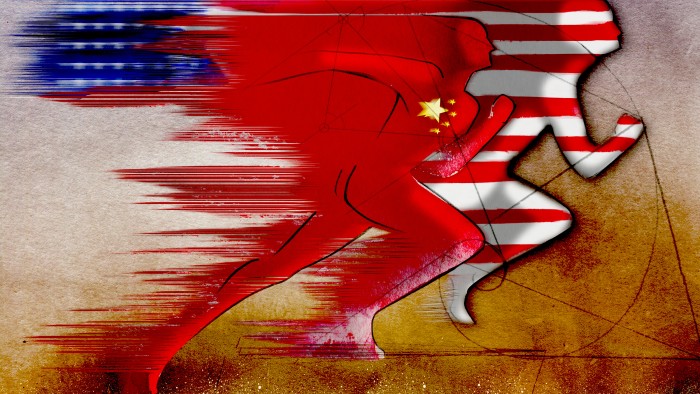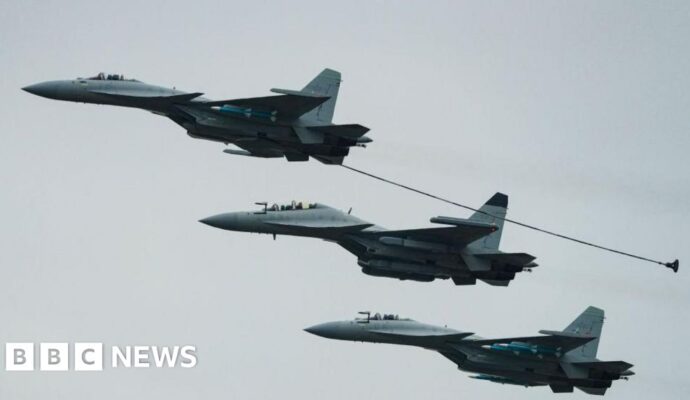
Stay informed with free updates
Simply sign up to the Technology sector myFT Digest — delivered directly to your inbox.
The writer is a fellow at Stanford’s Hoover Institution and author of ‘Breakneck: China’s Quest to Engineer the Future’
Each month brings fresh indications that China is catching up with the US on the development of artificial intelligence.
At the end of 2024, the Chinese start-up DeepSeek decisively demonstrated that Silicon Valley possesses no monopoly on frontier models. It’s large language AI model was shown to achieve a comparable performance using far fewer chips than those of the US. In the wake of DeepSeek, models released by Alibaba, ByteDance, Moonshot AI and other Chinese labs have demonstrated new capabilities. Even China’s beleaguered, sanctioned chip sector has seen the production of AI chips surge.
Within Silicon Valley, more start-up founders and venture capitalists are gaining an appreciation of the scale of China’s broader achievements. They grow more impressed by its ability to master complex manufactured products at scale, such as electric vehicles, as well as the ability to make enormous investments in electrical power.
That has been accompanied, over the past 10 months, by a sense of unease about the Trump administration’s policies, including limiting the employer-sponsored H-1Bs visas widely used by the tech sector.
By nearly all measures, the US still maintains the global lead on AI. It possesses the most important asset: computing capacity, as represented by the most advanced AI chips. But computing power is not the only component of AI. China enjoys other structural advantages in the competition. So it is time to ask: Is there a potential scenario in which China pulls ahead of the US on AI?
Data centres demand fantastic amounts of electrical power. Here, China has a towering advantage over the US. In the first half of 2025, Ember Energy calculated that China installed 256 gigawatts of solar capacity — that’s 12 times the 21 gigawatts installed in the US. While China has 32 nuclear reactors under construction, the US has none.
Meanwhile, President Donald Trump has been actively hostile to the deployment of solar and wind, denouncing these technologies as “the scam of the century”, and directing his administration to cancel offshore wind development.
In the longer term, the US might run into power problems caused by hungry data centres. China, a state that takes pains never to deny power to heavy industry, faces little of that risk.
AI is created by a class of human technical talent that is highly skilled and very expensive. To build up Meta’s capabilities, Mark Zuckerberg has reportedly offered pay packages worth hundreds of millions to individual engineers. Many of the publicly listed hires at Meta’s AI lab earned their degrees at Chinese universities, including Tsinghua, Peking and Zhejiang University.
These Chinese engineers tend to be fluid creatures, sometimes moving between labs in Silicon Valley, sometimes repatriating when attracted to China or disenchanted with the US. Here again, Trump’s policies have the potential to destabilise competitive dynamics. The intensity of the Maga movement’s xenophobia could prompt more of them to take their skills back to China.
AI is not a simple “race”. What matters is not just creating the technology but what each country does with it. Silicon Valley has been obsessed with superintelligence, as if it were possible to build God in a box. Beijing has been interested less in treating AI as a supernatural goal, and more as a technology to be harnessed — Chinese academics and policymakers consistently talk about AI as a practical tool for enhancing existing industries.
AI will help both countries deepen their specialisations. Think about it this way: America is better in service sectors such as consulting and litigation; with AI, it might be able to generate even more lawsuits. China, which has far superior training data on manufacturing, might grow even better at producing electronics, drones and munitions.
The main obstacle on China’s path towards AI mastery is the lack of computing capacity. But here, Trump might still offer relief. In an unprecedented deal, the US president is set to provide exceptional export licenses to Nvidia and AMD to sell to China if they hand over 15 per cent of these revenues.
China’s AI development prospects would certainly be brighter if US constraints were relaxed. Not only could it close the gap on training AI, it would be able to give its tech talent even greater electrical power and a more robust manufacturing base to improve.


